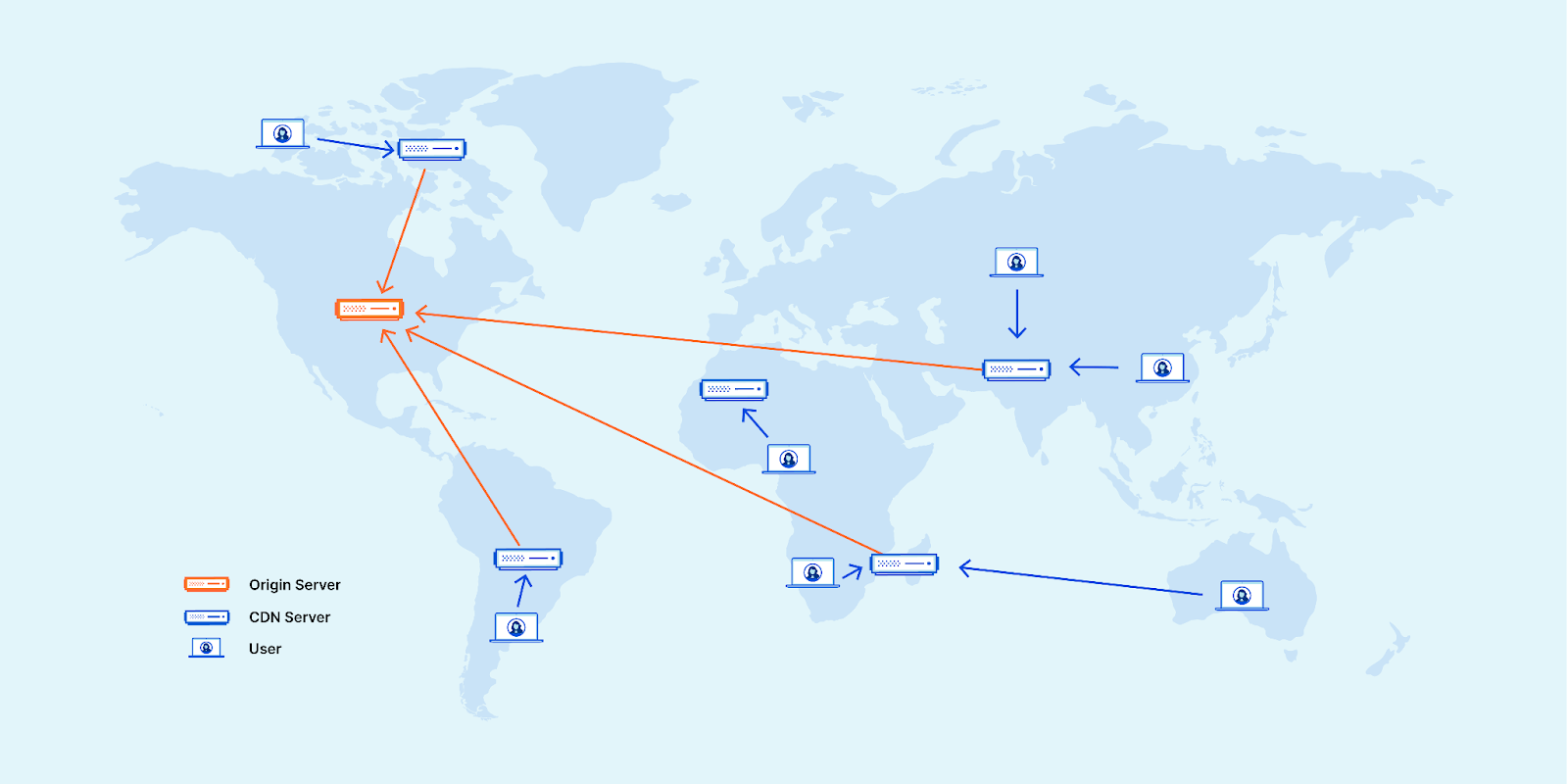
The Ultimate Guide to Digital Rights Management in 2025
In this comprehensive guide, we will delve into the world of Digital Rights Management, exploring its evolution, significance in the digital media industry, current challenges faced by the industry, and future trends that will shape the landscape of content protection. We will also discuss how Thu Do Multimedia, a leading DRM solution provider, is revolutionizing the field with its innovative technologies.
Introduction
Digital Rights Management (DRM) plays a crucial role in the ever-evolving landscape of digital media management. It is a technology that safeguards digital content from unauthorized access, copying, and distribution. By creating a digital barrier between the content and the user, DRM restricts usage in various ways, such as preventing editing, sharing, and screen grabbing.
But why is DRM so important? In today’s digital age, content creators invest significant time, effort, and resources in producing high-quality digital media. They deserve to have control over their intellectual property and ensure fair use of their creations. DRM empowers them to protect their content from unauthorized reproduction or distribution.
Moreover, DRM plays a vital role in enabling content distributors to monetize their offerings. By implementing DRM technologies, they can create subscription-based models or pay-per-view systems that provide users with secure access to premium content.
So buckle up as we embark on this journey into the future of digital media management. Get ready to explore:
- The evolution of DRM systems
- The crucial role of DRM in effective content management
- The challenges ahead for the industry
- Emerging trends shaping the future of DRM
- Predictions for DRM’s role in 2024 and beyond
Let’s uncover the secrets behind successful digital rights management and how it can shape your organization’s success.
Understanding Digital Rights Management (DRM)
Digital Rights Management (DRM) is the technology and strategies used to protect digital content from unauthorized access, reproduction, and distribution. It plays a crucial role in safeguarding the intellectual property of content creators and ensuring fair use of digital media files. The core principles of DRM revolve around controlling access to digital content and monitoring its usage.
Implementing DRM is essential for both content creators and distributors due to the following reasons:
Reasons to Implement DRM
- Protection of Intellectual Property: DRM provides a layer of security that prevents unauthorized copying, sharing, or modification of digital assets. This is particularly important for individuals and organizations looking to maintain control over their creative works and proprietary information.
- Fair Use and Monetization: By implementing DRM, content creators can regulate how their digital media is consumed, allowing them to monetize their work through various distribution channels while still respecting copyright laws.
- Prevention of Piracy: DRM technology acts as a deterrent to piracy by limiting the unauthorized reproduction and distribution of digital content. This is especially relevant in industries such as video streaming platforms, e-book publishing, music distribution, and software development where piracy poses significant threats.
Common Use Cases of DRM
- Video Streaming Platforms: Content providers use DRM to protect their premium video content from being unlawfully downloaded or redistributed.
- E-book Publishing: Publishers utilize DRM to prevent unauthorized sharing or duplication of copyrighted e-books.
In summary, DRM serves as a crucial tool for protecting digital assets and ensuring that content creators can manage and monetize their work effectively while maintaining control over its usage.
Read more: Sigma DRM Change For Online Course Management
The Evolution of DRM Systems
Unveiling the Future of Digital Media Management
The evolution of DRM systems showcases a fascinating journey from rudimentary protection methods to sophisticated digital rights management solutions. Understanding this transformation provides valuable insights into the current landscape of content protection and sets the stage for predicting future trends. Here’s an overview of the early days of DRM and its evolution over time:
Early Days
DRM initially focused on basic encryption and access control mechanisms to prevent unauthorized duplication and distribution of digital content. However, these early systems faced significant limitations in terms of flexibility and user experience.
Adaptation to New Threats
As digital piracy methods advanced, DRM systems evolved to incorporate more robust encryption algorithms, rights management controls, and secure authentication mechanisms. This adaptation was crucial in addressing emerging threats and maintaining the integrity of digital media assets.
User Demands
Over time, user expectations played a pivotal role in shaping the evolution of DRM systems. Consumers sought seamless access to digital content across multiple devices without compromising security. This led to the development of cross-platform DRM solutions that prioritize both convenience and protection.
Technological Advancements
The integration of advanced technologies such as machine learning, data analytics, and adaptive security protocols marked a significant shift in the capabilities of DRM systems. These innovations enabled proactive threat detection, personalized user permissions, and dynamic content watermarking.
By tracing the evolution of DRM systems, it becomes evident that continuous innovation has been driven by the need to stay ahead of piracy threats while delivering enhanced user experiences. This historical perspective sets the stage for exploring the future landscape of DRM technology in 2024 and beyond.
The Crucial Role of DRM in Effective Digital Media Management
Digital media management involves creating, distributing, and making money from digital content. In today’s world, where piracy and sharing without permission are common, it’s important to keep digital assets safe. That’s where Digital Rights Management (DRM) comes in.
How DRM technologies work with content management strategies to keep things secure and make money
DRM technologies give creators and distributors the tools they need to protect and control who can access their digital media files. With DRM, they can protect their work and stop people from copying, sharing, or changing it without permission.
One thing DRM does is encrypt files. It uses special codes to scramble the files, so they can only be read by someone who has the right key to unlock them. This means only people with permission can get to the content. Encryption also stops hackers or unauthorized people from getting at the files while they’re being sent from one place to another.
DRM also lets creators decide what people can do with their files. They can say if someone is allowed to view, print, copy, or share the content. For example, a company that makes e-books might let readers look at the book but not print or copy it so others can’t pass it around for free.
What modern DRM systems can do
Newer DRM systems have features that help with digital media management:
- License Management: DRM tools can create and manage licenses that let people access protected content. These licenses can be set up to allow certain things and stop others.
- Watermarking: Some DRM systems add hidden marks to media files. These marks act like fingerprints and show where unauthorized copies came from. This makes it harder for people to steal content.
- Analytics and Reporting: DRM programs often come with ways to track how content is being used. Creators can see things like how many times something was watched or when it was accessed. This information helps them make choices about how to sell and share their work.
How DRM can be added to different digital platforms
To manage digital media well, DRM tools need to work smoothly with different digital platforms. This makes sure DRM can be used the same way on lots of devices, systems, and ways of sending content. Here are some common ways to add DRM to digital platforms:
- API Integration: Many DRM providers have APIs that let developers add DRM right into their own apps or websites. This means content can be protected and controlled without needing a whole new system.
- Content Management System (CMS) Integration: DRM can be added to popular CMS platforms like WordPress or Joomla. This makes it easier to protect media files and manage licenses in the CMS.
- Streaming Platform Integration: Streaming services often need strong DRM abilities to protect videos and movies. DRM systems can work with streaming platforms such as YouTube or Netflix to make sure streaming is secure and downloads are stopped.
By using DRM tools as part of their digital media management plans, creators and distributors can keep their work safe, control who gets to see it, and find new ways to make money from it. It’s an important tool in today’s online world where protecting ideas is key.
Read more: DRM Protection Safeguarding Digital Content
Addressing the Challenges Ahead: The Future-proof DRM Solutions
Thu Do Multimedia, a leading provider of DRM solutions, understands the challenges faced by the industry and has developed cutting-edge technologies to address them. Here is an overview of Thu Do Multimedia’s innovative DRM solution and its relevance in the future of content protection:
Thudo Multimedia’s DRM Solution
Thu Do Multimedia offers a comprehensive DRM solution that combines advanced encryption techniques with flexible rights management capabilities. Their solution provides robust security measures to prevent unauthorized access, copying, and distribution of digital content. By leveraging state-of-the-art encryption algorithms and secure key management systems, Thu Do Multimedia ensures that content remains protected throughout its lifecycle.
Read more: Offline DRM
Multi-platform Compatibility
Thu Do Multimedia’s DRM solution is designed to seamlessly integrate into various digital platforms, making it highly versatile for content creators and distributors. Whether it’s video streaming platforms, e-book publishing platforms, or online music stores, Thu Do Multimedia’s DRM solution can be easily deployed to safeguard digital assets across different mediums.
User-friendly Experience
Thudo Multimedia understands the importance of providing a user-friendly experience without compromising on security. Their DRM solution offers intuitive interfaces and easy-to-use tools for content creators and end-users alike. With features such as dynamic watermarking, screen capture prevention, and IP-based access controls, Thudo Multimedia ensures that content remains securely protected while still delivering a seamless user experience.
Scalability and Flexibility
As the demand for digital content continues to grow, scalability becomes a crucial factor for any DRM solution. Thu Do Multimedia’s offering is highly scalable, allowing businesses to adapt their content protection strategies as their needs evolve. Additionally, their DRM solution offers flexibility in terms of licensing models, enabling businesses to choose the most suitable option based on their requirements.
Continuous Innovation
Thu Do Multimedia remains committed to continuous innovation in the field of DRM. They actively monitor industry trends and emerging technologies to enhance their solution and stay ahead of potential threats. By investing in research and development, Thu Do Multimedia ensures that their DRM solution remains future-proof, providing content creators and distributors with the necessary tools to protect their digital assets effectively.
In conclusion, Thudo Multimedia’s cutting-edge DRM solution addresses the challenges faced by the digital media industry head-on. With its comprehensive security measures, multi-platform compatibility, user-friendly experience, scalability, and continuous innovation, Thudo Multimedia empowers content creators and distributors to protect their valuable assets in an ever-changing landscape.
By choosing Thudo Multimedia’s DRM solution, businesses can future-proof their content protection strategies and ensure a secure and profitable digital media presence.
Emerging Trends Shaping the Future of DRM
Role of Blockchain Technology in Revolutionizing Secure Content Distribution and Rights Management

Blockchain technology is poised to revolutionize secure content distribution and rights management within the digital media industry. By leveraging blockchain’s decentralized and immutable nature, DRM solutions can offer unprecedented levels of security and transparency.
Through the use of smart contracts, content creators can enforce specific usage rights and automate royalty payments, ensuring fair compensation for their work. Additionally, blockchain enables the creation of transparent and auditable records of content usage, providing valuable insights for both rights holders and distributors.
Utilization of Artificial Intelligence for Advanced Piracy Detection and Prevention Measures
The integration of artificial intelligence (AI) into DRM systems is enabling advanced piracy detection and prevention measures. AI-powered algorithms can analyze vast amounts of data to identify patterns indicative of unauthorized distribution or usage of protected content.
Furthermore, AI-driven predictive analytics can anticipate potential threats and adapt DRM strategies in real-time to mitigate risks. By harnessing the power of AI, DRM solutions are becoming more proactive in safeguarding digital assets against evolving piracy tactics.

Benefits and Challenges of Cloud-Based DRM Solutions in a Connected Digital Ecosystem
Cloud-based DRM solutions are playing an increasingly vital role in securing digital content within today’s connected digital ecosystem. These solutions offer scalability, flexibility, and accessibility, allowing seamless integration across various platforms and devices.
Moreover, cloud-based DRM facilitates efficient content delivery while ensuring robust security measures. However, challenges such as data privacy concerns, cross-border regulatory compliance, and potential vulnerabilities in cloud infrastructure must be carefully addressed to maximize the benefits of cloud-based DRM solutions.
By embracing these emerging trends, the future of DRM is set to undergo profound transformations, empowering content creators and distributors with enhanced security capabilities while adapting to the dynamic landscape of digital media consumption.

Looking Ahead: The Future Landscape of DRM Technology
Unveiling the Future of Digital Media Management
Predictions for the role of DRM in 2024 and beyond, considering evolving business models and consumer behaviors. Anticipated impact of technological advancements on both content creators and users.
As we look ahead to the future landscape of DRM technology, it’s essential to consider the evolving role of digital rights management in 2024 and beyond. With the rapid growth of digital content consumption and the emergence of new technologies, several key predictions can be made about the direction of DRM and its impact on content creators and users.
Evolving Business Models
The role of DRM is expected to become even more crucial as businesses adapt to new revenue models and distribution channels. With the rise of subscription-based services, pay-per-view models, and microtransactions, content creators will rely on robust DRM solutions to protect their assets and ensure fair compensation for their work. As a result, DRM technologies will need to evolve to accommodate these diverse monetization strategies while maintaining a seamless user experience.
Consumer Behaviors
The future of DRM will be shaped by shifting consumer behaviors and expectations. As users demand greater flexibility in accessing digital content across multiple devices and platforms, DRM solutions will need to strike a balance between security and convenience. The prevalence of on-the-go consumption, personalized recommendations, and social sharing will drive the need for adaptive DRM measures that safeguard content without hindering accessibility.
Technological Advancements
Technological advancements in areas such as artificial intelligence, machine learning, and data analytics are poised to transform the capabilities of DRM systems. These innovations will enable more sophisticated piracy detection methods, personalized content protection mechanisms, and real-time threat response. Additionally, advancements in encryption standards and secure hardware technologies will bolster the overall resilience of DRM solutions against emerging threats.
Impact on Content Creators and Users
The future landscape of DRM technology holds significant implications for both content creators and users. While creators stand to benefit from enhanced control over their intellectual property and diversified monetization opportunities, users can expect a more personalized yet secure digital media experience. However, striking a balance between stringent protection measures and user freedom will be paramount as DRM continues to evolve.
In summary, the future of DRM technology in 2024 is poised to be shaped by:
- Evolving Business Models
- Consumer Behaviors
- Technological Advancements
As digital media management continues to adapt to these shifts, DRM solutions will play a pivotal role in ensuring the integrity and accessibility of digital content.
Conclusion
Final Thoughts on the Dynamic Nature of DRM
As we have explored in this guide, digital rights management (DRM) plays a crucial role in protecting and managing digital media in today’s rapidly evolving landscape. The continued growth of digital content consumption and the increasing threat of piracy necessitate innovative solutions that can safeguard intellectual property and ensure fair use.
DRM has come a long way since its early days, evolving to combat new piracy threats and meet the demands of content creators and distributors. Today, modern DRM systems offer a wide range of features and functionalities that work hand in hand with content management strategies to provide comprehensive security and monetization opportunities.
Looking towards the future, DRM will continue to adapt to changing business models and consumer behaviors. Technological advancements such as blockchain and artificial intelligence will revolutionize secure content distribution and piracy prevention measures. Cloud-based DRM solutions will also play an important role in a connected digital ecosystem.
Empowering Readers with Thudo Multimedia’s Advanced DRM Solution
To stay ahead in this ever-changing landscape of digital media management, it is essential to embrace continuous innovation. Thudo Multimedia, a leading DRM solution provider, offers cutting-edge technologies that address the challenges faced by content creators and distributors.
- Sign up for a free demo of Thudo Multimedia’s advanced DRM solution today.
- Experience firsthand how their innovative technologies can empower you to protect your digital assets, monetize your content effectively, and navigate the future landscape of digital media management.
- Click here to sign up for a free demo
With the evolution of technology and changing consumer behaviors, the role of DRM will continue to be indispensable in ensuring the security and fair use of digital media files. By implementing robust DRM systems and staying informed about emerging trends, we can shape the future of content protection and create a sustainable environment for both content creators and users.
Stay ahead, embrace innovation, and unlock the full potential of your digital assets with Thu Do Multimedia’s advanced DRM solution.
Sign up now for a free demo and be part of the future of digital media management.















Recent Comments